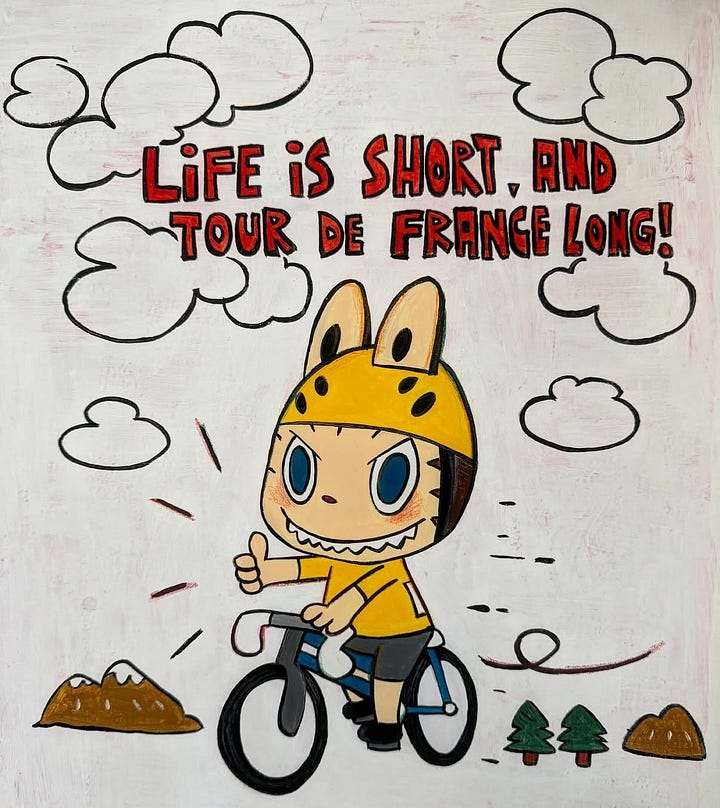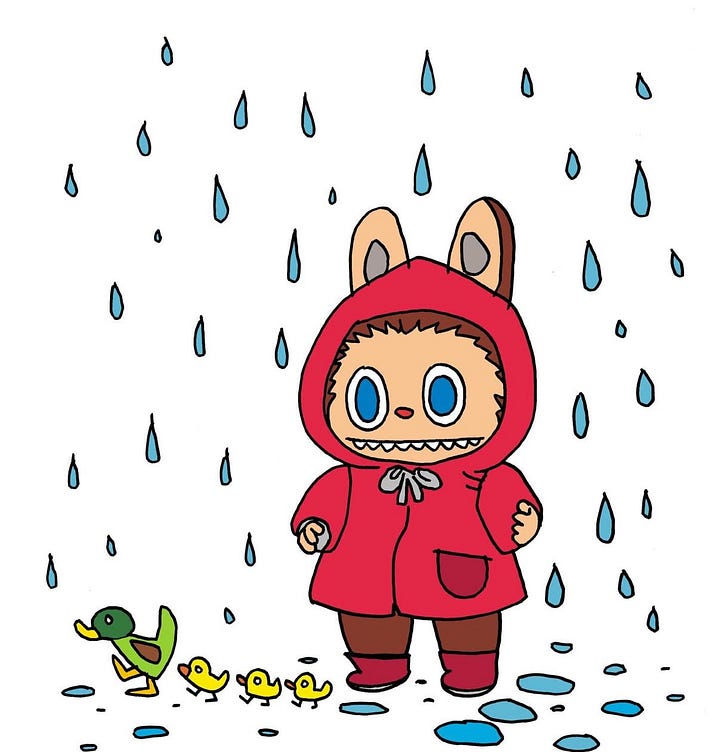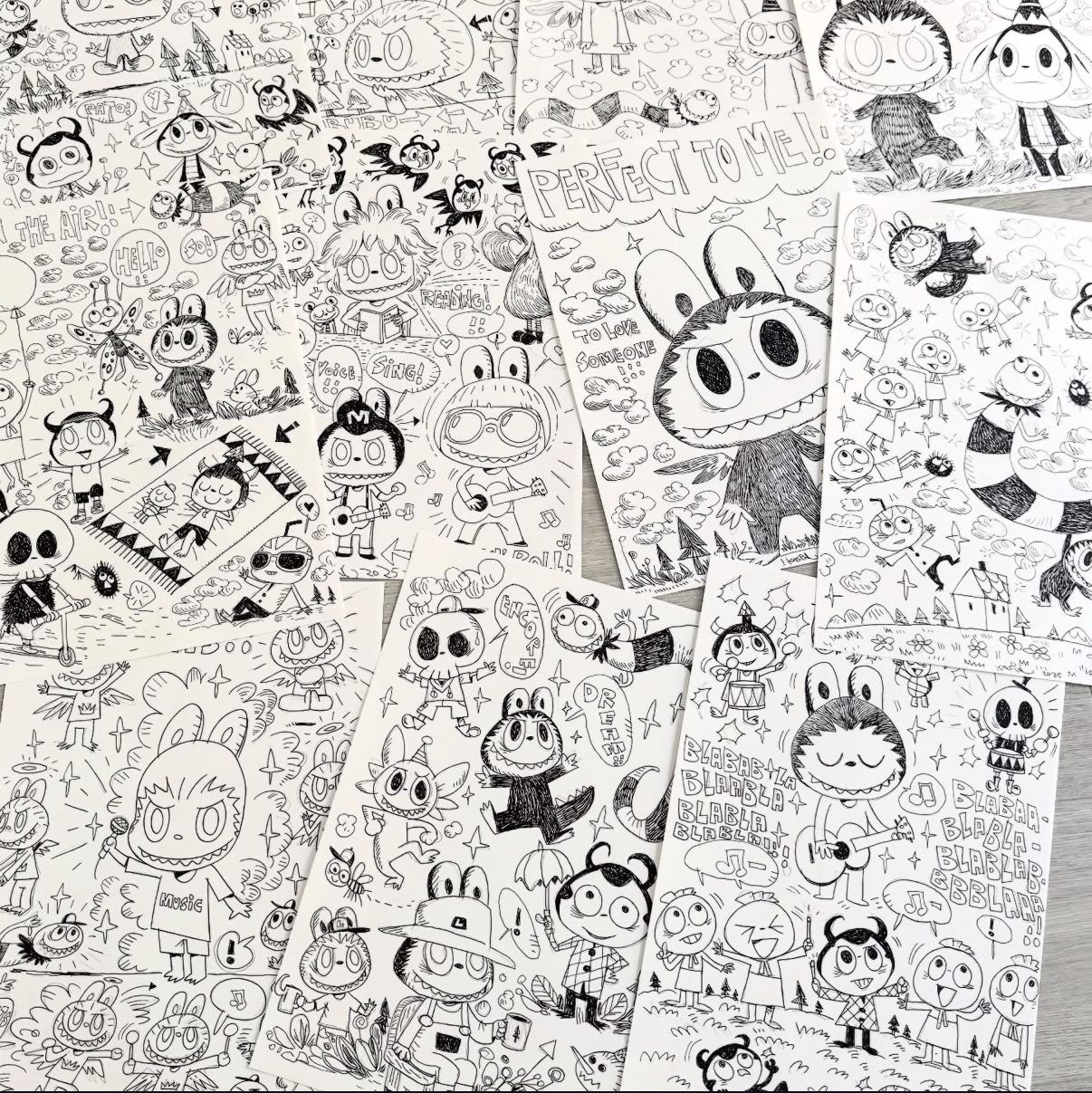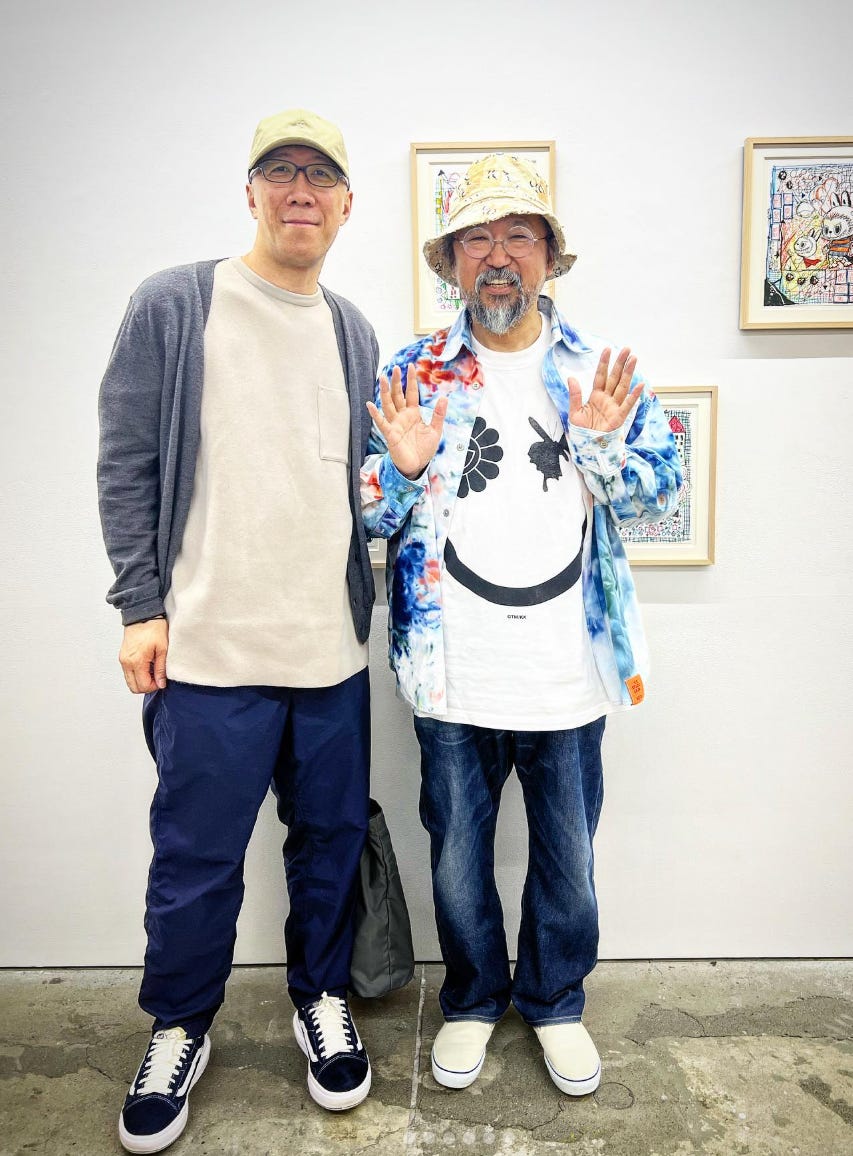Today’s newsletter is filed in the art category. I actually wrote this 2 weeks ago and then decided not to publish because I thought the trend had hit it’s peak and my audience interest may have dwindled on this topic. And then in the past few days, to my incredible surprise, the chatter in one of my group chats mostly revolved around this topic. Just for perspective, there are 10 friends in our Whatsapp chat of all genders and the average age is 40. I realized the trend might actually be well on it’s way to an even steeper incline as many of us shared stories about how we are hustling to get certain ones. If you haven’t figured it out by now, I’m talking Labubus. But this isn’t the actual focus on my article today.
I won’t talk about how Pop Mart stock went up 197% this year, or how Wang Ning, Pop Mart’s CEO, became China’s 10th richest man last week (net worth $22.6B) because of a fuzzy little doll. I won’t go into that because by now most of you have probably read the news.
The real curiosity and interest for me is Kasing Lung. Who is Kasing Lung? He’s the incredibly talented artist who created the Labubu…and ultimately made Pop Mart make history. His story of creating a creature that merges East and West is truly fascinating. Without him, there would never have been the fuzzy monster phenomenon. In the art world, Lung is so much more than a trending toy creator. He’s a rising star that true art lovers and collectors are taking note of. And, as most talented artists, his is not an overnight success story.
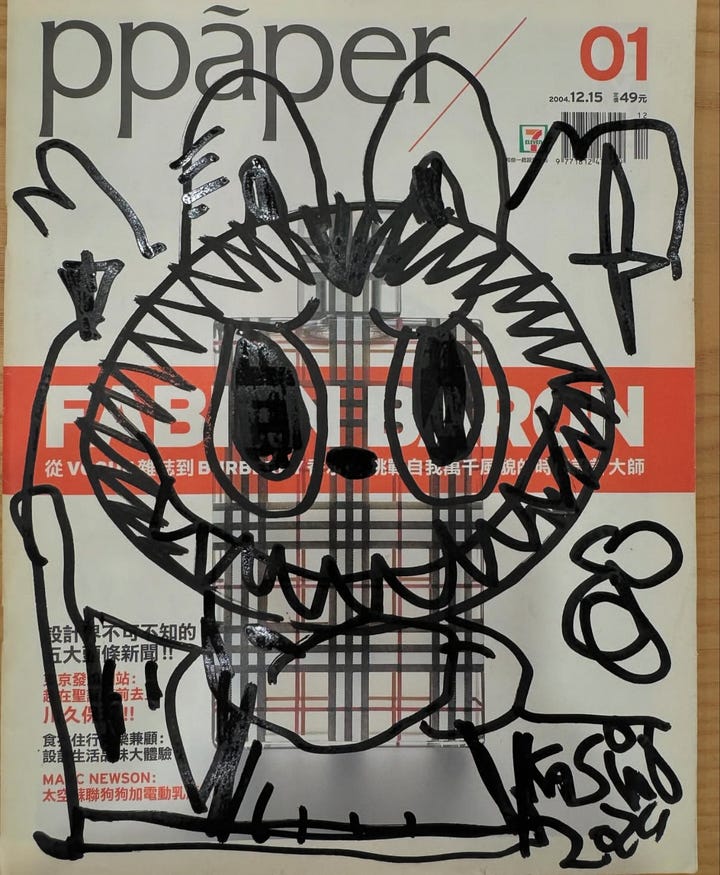
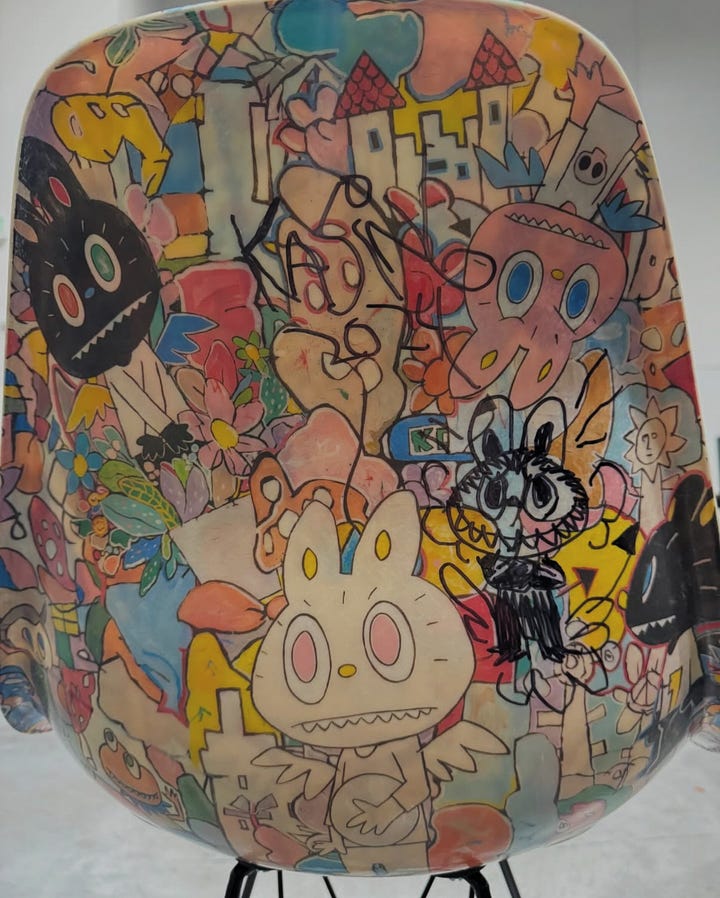
In the rarefied crossover between luxury art collecting and collectible culture, Lung’s name continues to rise above the rest. He has evolved into a force in the fine art world, evolving from a respected children’s book illustrator into a painter whose canvases and sculptures regularly command five to six figure prices at auction. Born in Hong Kong in 1972 and raised in the Netherlands, Lung grew up sketching fantastical creatures in the margins of his notebooks. Due to serious asthma, he spent most of his childhood indoors instead of playing outside, which led to his pass time of sketching. This blend of his Chinese heritage and growing up in the Netherlands is so apparent in his whimsical creatures that have Chinese, yet heavy Nordic influence.
As an adult, he trained as a graphic designer and illustrator, working in children’s publishing until 2015, when he launched The Monsters series. This series lead to the birth of his most iconic creature, the Labubu. Originally sketched in storybooks, Labubu was brought to life through Lung’s transformative partnership with Pop Mart, and 10 years later it is rapidly becoming one of the greatest cult collectibles of all time. Lung’s Labubu sets and smaller vinyl editions routinely fetch tens of thousands of dollars. These aren’t just toys. They are valued assets, traded and showcased like fine sculpture. I saw a rare Labubu doll online this week for $6,000. The original retail price could not have been more than $24.99. As much as people want to shrug off the Labubu as a children’s fad, it’s an adult collector’s game with value attached to these figures.

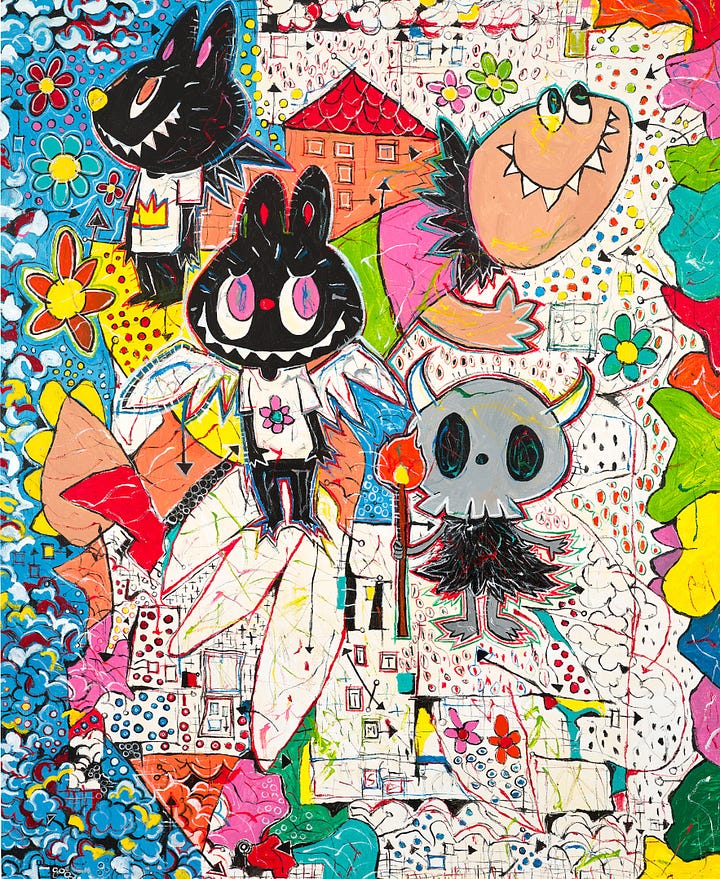
But the evolution for Lung didn’t stop with Labubu’s birth in 2015. Since 2020, Lung has mounted solo exhibitions like “THIS IS WHAT IT FEELS LIKE” and “EVERYBODY KNOWS” at Kaikai Kiki Gallery and Hidari Zingaro. These galleries are founded by legend Takashi Murakami, who has played a mentor role for Lung.
When I learned about this relationship and Murakami’s strong support for Lung, I became deeply, DEEPLY excited. Murakami is one of my favorite artists of all time. Not just because of the multicolored monogram Louis Vuitton bag collaboration of 2003 (where Murakami and then LV Creative Director Marc Jacobs created pure magic by merging art, luxury and color into our lives), or the fact that he illustrated the cover of one of my favorite albums of all time (Kanye’s Graduation, 2007). Although these things dramatically shaped my late teens and early 20s, the reason I love Murakami and love his impact on Lung is that he is the godfather of the Superflat movement, becoming a pioneer in blending traditional Japanese art forms, fine art and pop culture. This art genre has continued to grow in popularity over the last 20 years, becoming sought-after statements in well-curated collections for serious art collectors. Although Lung is not traditionally considered a Superflat artist, his paintings have a similar whimsical feel and are far from novelty, with distinct characteristics and a focus on fantasy.
From illustrator to toy maker, Lung is now growing with mediums such as acrylic and various materials for sculpture. His value as a fine artist extends well beyond mini doll sculpture; and his paintings have become a key marker of prestige in contemporary collecting. Notable works include "Excited Plastic" sold at Christie’s Hong Kong this year for $100,431, and his acrylic on canvas "Mon" (2021), which was auctioned in Hong Kong for roughly $49,000. Just this month, Yongle International Auction in Beijing sold Lung’s human-sized Labubu sculpture for $150,275.
Lung’s true gift is understatement and familiar emotion. Across vinyl, painting, and sculpture, each piece offers a glimpse of a mythic inner life filled with beauty, nostalgia, and emotional resonance. That is the luxury of Kasing Lung’s art. He invites us all to feel, remember, and cherish. He has the unique gift of bringing art that evokes nostalgia into our lives. I imagine we can expect to see more of his unique work in the fine art space in the future, as I believe an adorable character that went viral is just a starting point for the world to know about this incredibly talented artist.
